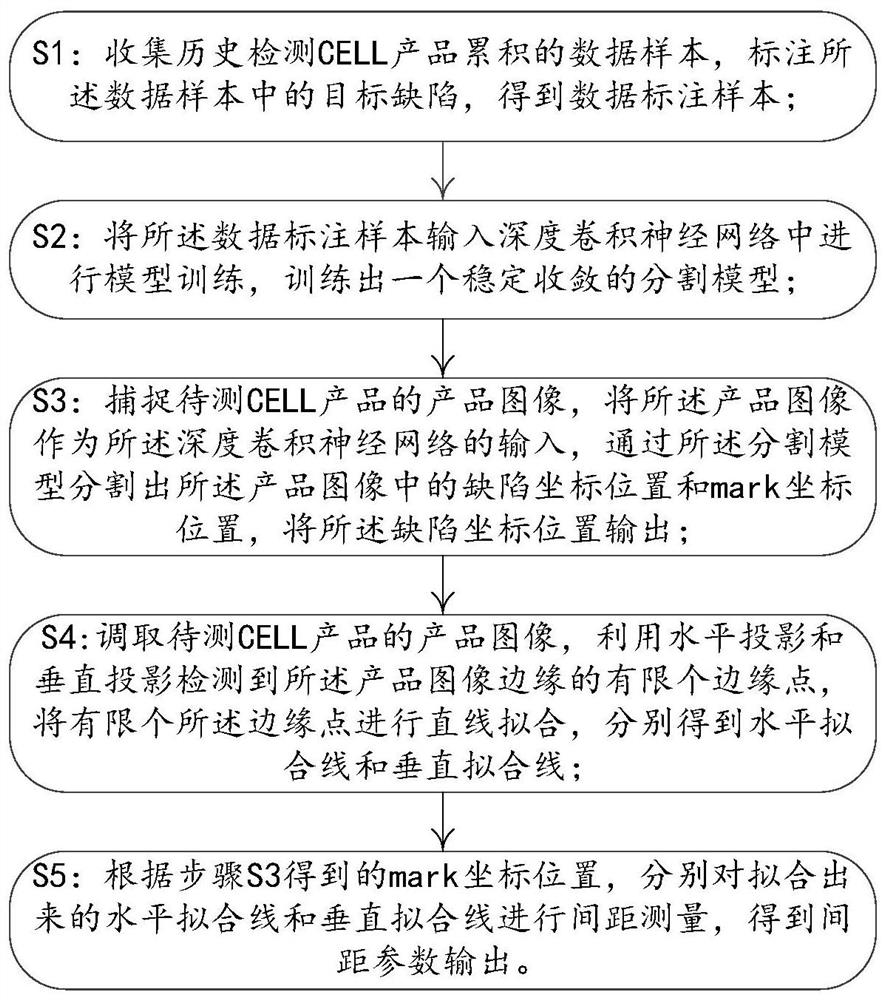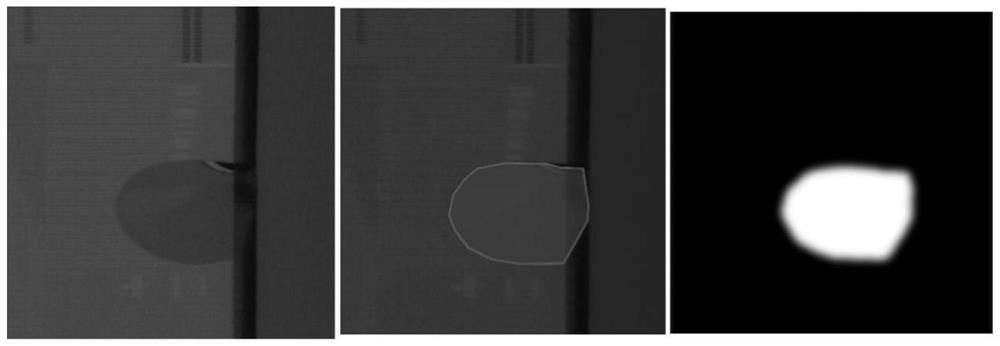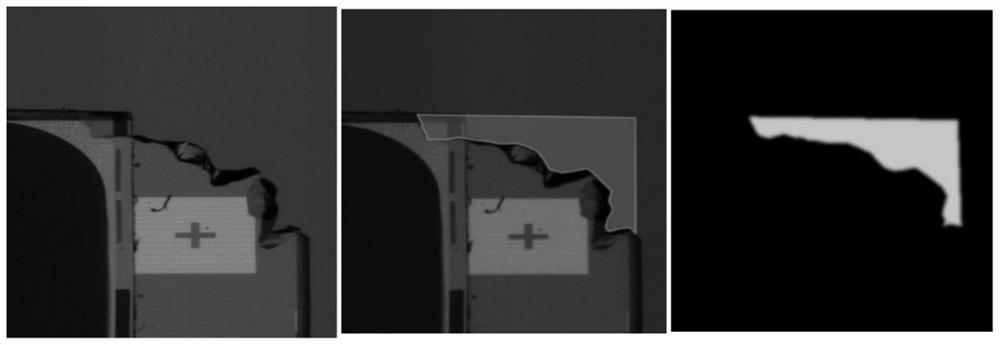CELL-based edge defect detection method
A detection method and edge defect technology, which is applied in the field of CELL-based edge defect detection, can solve problems such as difficulty in robustness, achieve high detection accuracy and improve detection efficiency
- Summary
- Abstract
- Description
- Claims
- Application Information
AI Technical Summary
Problems solved by technology
Method used
Image
Examples
Embodiment
[0035] like figure 1 , The core of the invention is to provide a method for detecting a defect on the edge of the CELL, the detection method comprising the steps of:
[0036] Collecting historical test CELL product accumulation data samples are denoted by the target defective data samples to obtain a sample label data; label is a need to use target segmentation model into the defect and data representation is denoted by the fixed objects are the types of defects and product surface logo mark printed pattern; certain defects include: surface defects, and a corner mark defect margins defects, wherein surface defects and defect margin mark marked contours are used, a packed marked corner defect; as figure 2 , The dirty spots on the surface defects of the contour labeled; if image 3 , The corners of the defective filling does labeling according to image 3 For the deletion of the defect at the corners, the use of the complete filling manner, the defect label.
[0037] The annotation da...
PUM
 Login to View More
Login to View More Abstract
Description
Claims
Application Information
 Login to View More
Login to View More - R&D
- Intellectual Property
- Life Sciences
- Materials
- Tech Scout
- Unparalleled Data Quality
- Higher Quality Content
- 60% Fewer Hallucinations
Browse by: Latest US Patents, China's latest patents, Technical Efficacy Thesaurus, Application Domain, Technology Topic, Popular Technical Reports.
© 2025 PatSnap. All rights reserved.Legal|Privacy policy|Modern Slavery Act Transparency Statement|Sitemap|About US| Contact US: help@patsnap.com



